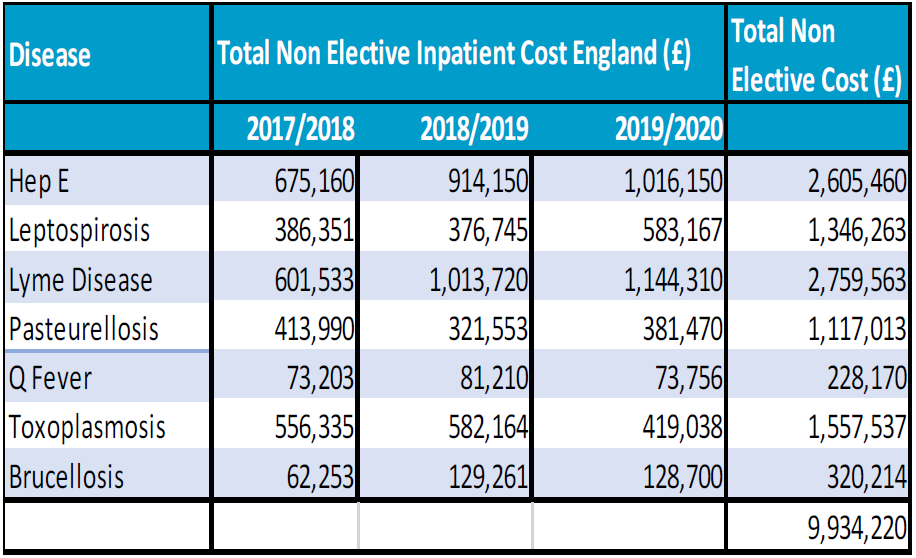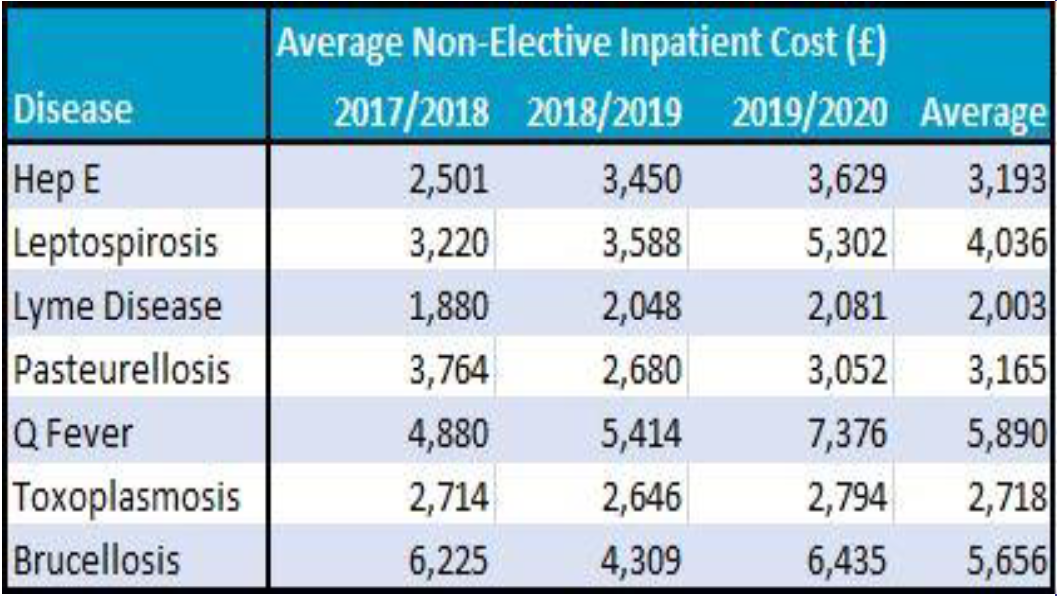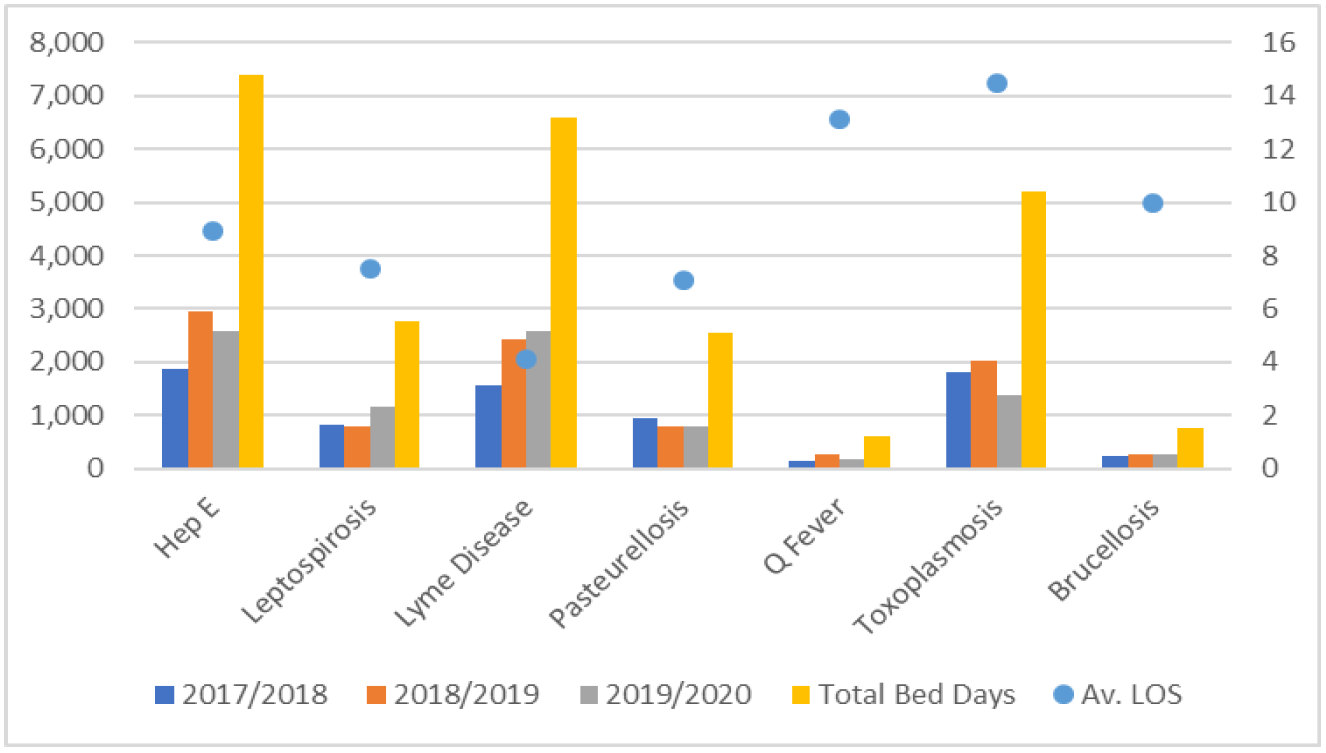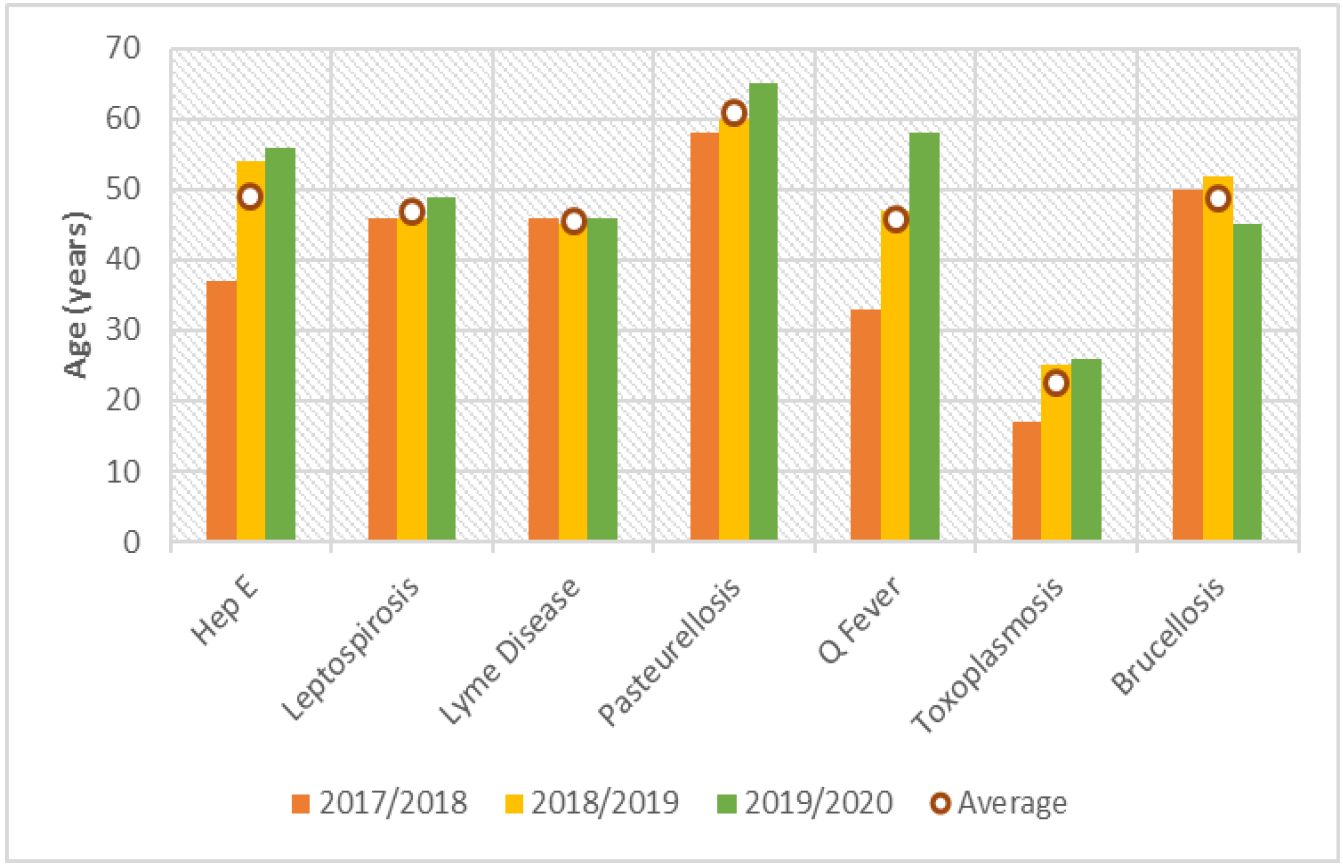Secondary Care Burden of Zoonotic Diseases in England 2017-2019
Habeeda Rashid1, Craig Davidson1, Christopher Ma1
1Sanofi Pasteur UK & Ireland, Reading, United Kingdom
Download Abstract
Video Summary of Poster
Background
- Zoonosis is an infectious disease transmitted from animals to humans through direct contact, food, water or the environment.
- A large percentage of new and existing diseases in humans are of zoonotic origin.
- There are 35 zoonotic diseases endemic to the UK.1
- Globally there are over 200 zoonotic diseases.2
- A recent example is COVID-19, caused by the novel coronavirus SARS-CoV-2, which has resulted in a global pandemic.
Objectives
- Zoonotic diseases are notifiable to Public Health England
- From these quarterly reports, we identified the seven most prevalent.
- Using Hospital Episode Statistics (HES) data, we sought to analyse the direct secondary care burden of these seven zoonotic diseases in England between 2017 and 2019.
Methods
- We extracted publicly available data for all age groups using the HES database from 1st April 2017 to 31st March 2020.
- All non-elective hospital admissions, patient counts, bed days and tariff costs, with primary or secondary diagnosis ICD-10 codes specifically related to Hepatitis E (B17), Leptospirosis (A27), Lyme disease (A69), Pasteurellosis (A28), Q Fever (A78), Toxoplasmosis (B58) and Brucellosis (A23).
- To maintain patient confidentiality, admissions and patient numbers were rounded up to the nearest 5 in accordance with NHS Digital guidelines
- From these data, we calculated average length of stay (LoS) and average cost per admission (CpA) for the population.
Table 1. Secondary Care Costs of Seven Zoonotic Diseases in England

Table 2: Average Cost per Admission (CpA)

Figure 1: Bed days (non-elective) and Average LoS

Figure 2: Average Age of Patients

Results
- The seven zoonotic diseases in this study accounted for 25,850 bed days over a three year period.
- 3,625 episodes over the three years.
- Total secondary care cost for these admissions was £9,934,220 (Table 1).
- Lyme disease accounted for the highest total cost (£2,759,563) (Table 1) and the highest total number of admissions (1,590), but was associated with the lowest CpA (£2,003) (Table 2) and the shortest average LoS (4.1 days) (Fig.1).
- Q fever accounted for the lowest total cost (228,169) (Table 1), but had the highest average CpA (£5,890) (Table 2).
- Patients admitted for Toxoplasmosis had the highest average LoS (14.5 days) (Fig.1)
- Average age of patients admitted was younger in those diagnosed with Toxoplasmosis (age 22.5), whilst the highest average age was seen in diagnosis of Pasteurellosis (age 60.9) (Fig.2)
Discussion
- People interact with animals on a daily basis, with many benefits to this relationship. However, there are also risks of disease, which we have demonstrated in the associated burden to secondary care in England.
- The wider socioeconomic cost must also be taken into consideration, as the recent global COVID-19 pandemic has highlighted how devastating these can be.
- The seven zoonotic diseases described are not currently vaccine preventable.
- In terms of prioritisation for vaccine development, Lyme disease accounted for both the highest total cost and the highest total admissions over the period studied.
- Alternatively, one might consider it a priority to develop a vaccine for Toxoplasmosis which saw the longest length of stay.
Limitations
- Individual datasets were unavailable meaning confidence intervals and standard deviation could not be calculated.
- Diagnostic uncertainties and coding errors may underestimate the total number of admissions.
- No gender specification so unable to determine if one gender is more susceptible
- This study only looked at secondary care burden; the actual burden of each disease might be very different if other aspects including primary care burden are included.
Conclusions
- Zoonotic disease can have a substantial negative impact on healthcare and society.
- The seven zoonotic diseases in this study are not vaccine preventable.
- Over a three year period in England, zoonotic diseases accounted for 25, 850 bed days at a cost of £9,934,220.
- COVID-19 has demonstrated the devastating impact a zoonotic disease with no vaccine can have.
- Ensuring budget for vaccine development and maximizing coverage with vaccines already available could result in significant savings for the healthcare system.
References
- Public Health England – Guidance List of Zoonotic diseases (updated 21 January 2019): https://www.gov.uk/government/publications/list-of-zoonotic-diseases/list-of-zoonotic-diseases
- WHO Zoonoses Factsheet; 29 July 2020. https://www.who.int/news-room/fact-sheets/detail/zoonoses. Accessed 19th April 2021.
Conflict of Interest
This study was conducted and funded by Sanofi Pasteur. All authors are employees of Sanofi Pasteur, UK and may hold shares and/or stock options in the company.
Contact
Christopher Ma
Medical Advisor, Sanofi Pasteur, UK & Ireland
Christopher.Ma@Sanofi.com
Download Poster
 BACK TO TOP
BACK TO TOP

